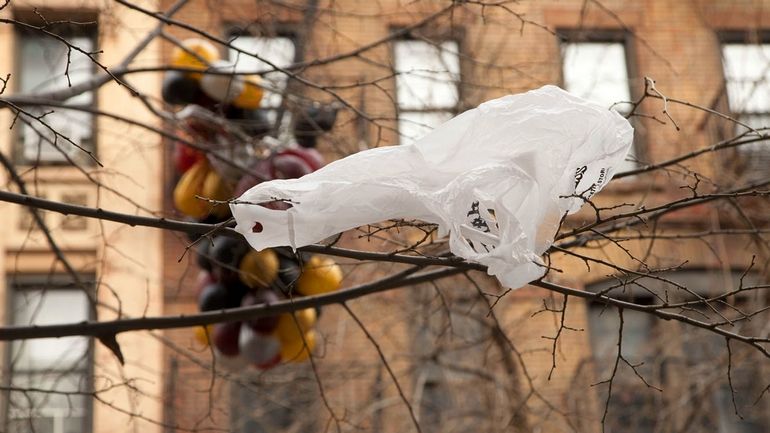 In 2015 34.5 million tons of plastic was disposed of, comprising 13% of all municipal solid waste (MSW) in the United States. However, only 3.14 million tons of plastics were recycled in 2015.
In 2015 34.5 million tons of plastic was disposed of, comprising 13% of all municipal solid waste (MSW) in the United States. However, only 3.14 million tons of plastics were recycled in 2015.
To encourage more Harlemites and New Yorkers to recycle and demystify the recycling process, we researched what each type of plastic is made of, what it can be recycled into, and how that recycling happens.
Have you ever looked at the bottom of your plastic product? Every plastic bottle or container has a number inside a triangle at the bottom, helping you to identify the type of plastic used to make it. In 1988, the Society of the Plastics Industry (SPI) created the Resin Identification Code system to facilitate the recycling of post-consumer plastics in the United States with a consistent national code system. Here are what the numbers mean:
1. PET (Polyethylene Terephthalate)
PET is used in the production of soft drink bottles, peanut butter jars, etc. PET is clear, tough, and has good moisture resistance. Recycled PET can be used to make fibers for carpets, bags, food and beverage containers, film and sheet, and strapping.
2. HDPE (High-Density Polyethylene)
HDPE is used for bottles for milk, water, juice, cosmetics, detergent bottles, and motor oil bottles due to its stiffness. HDPE can be recycled into flower pots, trash cans, traffic barrier cones.
3. V (Polyvinyl Chloride, PVC)
PVC is usually used to make pipes, shampoo bottle, and cooking oil bottles. It has good chemical resistance, weather ability, flow characteristics and stable electrical properties. It can be recycled into drainage and irrigation pipes.
4. LDPE (Low Density Polyethylene)
LDPE is used predominantly in grocery bags, bread bags, and shrink wrap. Due to its toughness, flexibility, and relative transparency. It can be recycled into new grocery bags.
5. PP (Polypropylene)
PP products include yogurt containers and bottle caps. It has good chemical resistance and a high melting point and can be found in flexible and rigid packaging, fiber, and large molded parts for automotive and consumer products. It can be recycled into car battery cases and plastic lumber.
6. PS (Polystyrene Plastic)
This type of plastic is used to make foodservice items (cups, plates, bowls, etc.) and protecting foam packaging. It has a relatively low melting point, and it’s clear, hard and brittle. It can be recycled into plastic lumber, cassette tape boxes, and flower pots.
PET (No.1) and HDPE (No.2) bottles comprise 97% of the plastic bottles and 98.8% of the recycled bottles in the United States. According to a study by Plastic Industry Association, plastic bottles and jars represent about 75% of all plastic containers by weight. In 2017, 2.8 billion pounds of plastic bottles were collected for recycling in the United States, with a recycling rate of 29.3%.
Across New York, municipal recycling trucks make curbside pick-ups and drop off the recyclables at a Material Recovery Facilities (MRF) for sorting. There, a giant crane picks up the waste and tosses them onto a conveyor belt, and a machine slices them. The recyclables then go through a line of conveyors, tumblers, metal detectors, and human sorters. Then the bottles will be compressed into bales. Check here for a demonstration video.
The baled compressed bottles go through a bale breaking machine, decompressed back into single bottles, separated from the trash and washed in hot caustic water. The bottles are then separated into 3 streams: clear PET, green PET, and non-PET. If a facility only handles PET, the rest of the plastics will be baled again and sent to different facilities. The clear and green streams of bottles are ground into cereal-like flakes and are intensively washed, rinsed and dried. The dry clean flakes are then melted and extruded into pellets, which can be converted into new products, such as carpet and polyester fabric. Check here for a video demonstration of this process.
With more knowledge of how your plastics are recycled and what they can be turned into, we hope Harlemites and others will be encouraged to recycle more often.
From NYLCV
Become a Harlem Insider!
By submitting this form, you are consenting to receive marketing emails from: . You can revoke your consent to receive emails at any time by using the SafeUnsubscribe® link, found at the bottom of every email. Emails are serviced by Constant Contact








